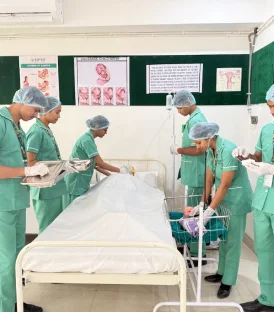October 26, 2021
Introduction
Glucose is a fundamental source of energy for a cell. It is released in the blood by the breakdown of endogenous glycogen stores that are located in the liver. It is also released indirectly from the muscle through various metabolites. The brain doesn’t have any energy storage of its own and therefore needs a constant supply of glucose. To ensure normal body function, our body tightly controls blood glucose levels which is called glucose homeostasis.
Blood glucose regulation
Blood glucose regulation involves maintaining the blood glucose at constant levels with range of 60-100 mg/dL for an adult. The aim of the regulating system is to manage the swings in glucose levels, to lower the blood glucose level just after a meal and to raise it between meals. This is accomplished by a network of various hormones and neuropeptides released from pancreas, brain, liver, intestine and muscles.
Liver acts like a first line of defence against these swings which receives all the portal vein blood from the gut along with the glucose being absorbed after a meal, much of it is taken up by the liver which stores it in the form of glycogen so the blood leaving the liver contains less glucose than the blood entering the liver and when no glucose is entering the portal blood from the gut, the liver breaks down some of its glycogen into glucose and releases it into the blood which avoids sharp fall in blood.
The kidneys play a key role in glucose homeostasis by release of glucose into the blood (gluconeogenesis) and reabsorption of glucose at the proximal tubules. The kidneys also help in elimination of excess glucose by facilitating its excretion in the urine.
The pancreas plays a very important role in the glucose homeostasis by releasing various pancreatic hormones particularly Insulin and Glucagon.
Insulin is secreted by the beta cells of pancreas. It is a key hormone that is secreted in response to increased blood glucose (hyperglycaemia) and amino acids after taking a meal. Like many hormones, insulin works by binding to specific receptors present on many cells of the body, including fat, liver, and muscle cells. The insulin initially signals the cells of insulin-sensitive tissues mainly skeletal muscle, to increase their uptake of glucose. Insulin acts on the liver to stimulate glycogenesis. It simultaneously inhibits glucagon secretion from pancreatic α-cells that signals the liver to stop producing glucose by glycogenolysis and gluconeogenesis.
Glucagon is a hormone secreted from pancreatic α-cells. Glucagon is released when there are low levels of glucose in the blood (hypoglycaemia). During sleep or in between the meals, when blood glucose levels are low, glucagon is released from the α-cells of pancreas that stimulates hepatic glycogenolysis. In addition, glucagon stimulates hepatic and renal gluconeogenesis to increase blood glucose levels during prolonged fasting.
Conclusion
The cells in the human body require glucose to survive. However excessive or less amount of glucose can be dangerous for the body. To maintain this balance, our body uses hormonal regulation. During high levels of blood glucose, insulin is released to allow the sugar into cells. If the blood glucose level decreases, glucagon will be released that will cause the formation of glucose and the release of glucose from glucose stores (glycogen). If the body experiences a threat, the sympathetic nervous system initiates a response that releases epinephrine which causes hepatic glucose release. If the body is not able to regulate blood glucose levels properly then it may cause a form of diabetes, cardio-vascular problems, eye problems etc.

















